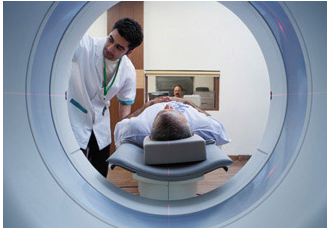
Mr. Heyden, a somewhat stocky 72-year-old man, is brought in to the emergency room (ER). The paramedics report that his left arm and the left side of his body trunk were pinned beneath some wreckage in a bus accident, and that when he was freed, his left hypogastric and lumbar areas appeared to be compressed and his left arm was blanched and without sensation. On admission, Mr. Heyden is alert, slightly cyanotic, and complaining of pain in his left side; he loses consciousness shortly thereafter. His vital signs are taken, blood is drawn for laboratory tests, and Mr. Heyden is catheterized and immediately scheduled for a CT scan of his left abdominal region.

Analyze the information that was subsequently recorded on Mr. Heyden’s chart:
Vital signs: Temperature 39°C (102°F); BP 90/50 mm Hg and falling; heart rate 116 beats/min and thready; 30 respirations/min
Given the values above and his attendant cyanosis, what would you guess is Mr. Heyden’s immediate problem? Explain your reasoning.
Want to see the full answer?
Check out a sample textbook solution
Chapter 25 Solutions
Anatomy & Physiology (6th Edition)
- Noggin mutation: The mouse, one of the phenotypic consequences of Noggin mutationis mispatterning of the spinal cord, in the posterior region of the mouse embryo, suchthat in the hindlimb region the more ventral fates are lost, and the dorsal Pax3 domain isexpanded. (this experiment is not in the lectures).a. Hypothesis for why: What would be your hypothesis for why the ventral fatesare lost and dorsal fates expanded? Include in your answer the words notochord,BMP, SHH and either (or both of) surface ectoderm or lateral plate mesodermarrow_forwardNot part of a graded assignment, from a past midtermarrow_forwardNot part of a graded assignment, from a past midtermarrow_forward
- please helparrow_forwardWhat does the heavy dark line along collecting duct tell us about water reabsorption in this individual at this time? What does the heavy dark line along collecting duct tell us about ADH secretion in this individual at this time?arrow_forwardBiology grade 10 study guidearrow_forward
 Anatomy & PhysiologyBiologyISBN:9781938168130Author:Kelly A. Young, James A. Wise, Peter DeSaix, Dean H. Kruse, Brandon Poe, Eddie Johnson, Jody E. Johnson, Oksana Korol, J. Gordon Betts, Mark WomblePublisher:OpenStax College
Anatomy & PhysiologyBiologyISBN:9781938168130Author:Kelly A. Young, James A. Wise, Peter DeSaix, Dean H. Kruse, Brandon Poe, Eddie Johnson, Jody E. Johnson, Oksana Korol, J. Gordon Betts, Mark WomblePublisher:OpenStax College Human Physiology: From Cells to Systems (MindTap ...BiologyISBN:9781285866932Author:Lauralee SherwoodPublisher:Cengage Learning
Human Physiology: From Cells to Systems (MindTap ...BiologyISBN:9781285866932Author:Lauralee SherwoodPublisher:Cengage Learning- Understanding Health Insurance: A Guide to Billin...Health & NutritionISBN:9781337679480Author:GREENPublisher:CengageSurgical Tech For Surgical Tech Pos CareHealth & NutritionISBN:9781337648868Author:AssociationPublisher:Cengage
 Cardiopulmonary Anatomy & PhysiologyBiologyISBN:9781337794909Author:Des Jardins, Terry.Publisher:Cengage Learning,
Cardiopulmonary Anatomy & PhysiologyBiologyISBN:9781337794909Author:Des Jardins, Terry.Publisher:Cengage Learning,





